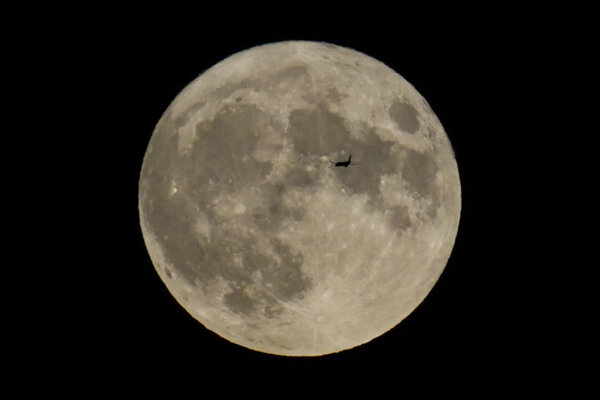
CAPE CANAVERAL, Fla.—A team of scientists has confirmed the existence of a cave on the moon, located near the historic landing site of Neil Armstrong and Buzz Aldrin 55 years ago. They suspect that there may be hundreds more caves on the moon that could potentially serve as shelters for future astronauts.
Based on radar measurements by NASA’s Lunar Reconnaissance Orbiter, researchers have identified a sizable cave accessible from a deep pit on the moon’s surface. This particular cave is situated at the Sea of Tranquility, approximately 250 miles from where Apollo 11 touched down.
The pits found on the moon, including this cave, are believed to have formed due to the collapse of lava tubes. Analysis of the radar data and comparison with lava tubes on Earth led to these conclusions, as detailed in a study published in the journal Nature Astronomy.
Although the radar data only reveals the initial portion of the cave, scientists estimate that it is at least 130 feet wide and several tens of yards long. The discovery of this cave marks a significant breakthrough in lunar exploration, as it has been a mystery for over five decades.
Most of the pits and potential caves are located in the moon’s ancient lava plains, with the possibility of similar formations at the moon’s south pole. NASA plans to send astronauts to the south pole in the coming years, where frozen water in shadowed craters could be a valuable resource for future missions.
The presence of these caves offers a natural shelter for astronauts, protecting them from radiation, micrometeorites, and other hazards of space. Utilizing these existing structures could be more efficient than building habitats from scratch, although reinforcement may be necessary to ensure their stability.
Furthermore, the rocks and materials preserved inside these caves can provide valuable insights into the moon’s geological history and evolution, particularly related to volcanic activity.
With the potential for hundreds of pits and thousands of lava tubes on the moon, these findings open up new possibilities for future lunar exploration and habitation.
By Marcia Dunn





